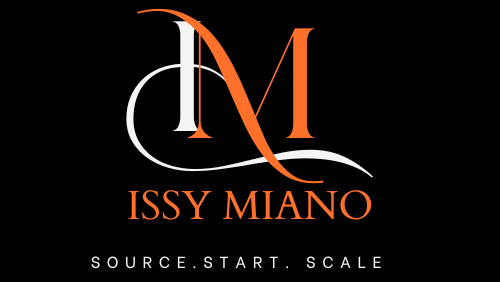How to Calculate Profitability and Break-Even Points: Key Strategies for Resellers and Ecommerce Businesses
Calculating profitability and break-even points is essential for resellers and e-commerce businesses. As a party interested in bulk purchasing, it’s crucial to understand not just the cost of goods sold, but also how these costs relate to your sales prices and the volume of sales you must achieve to reach profitability. The process involves several steps to pinpoint the precise moment at which you start making a profit after covering all the fixed and variable costs associated with the purchased goods.
Before diving into the calculation itself, it’s important for me to assess the entire landscape of the bulk purchase. This includes analyzing fixed costs such as storage and shipment, variable costs like packaging and labor, and understanding how these impact the overall profitability. Knowing the selling price of each unit is vital as well. It is the interplay between these costs and the sales price that will define the break-even point — the critical juncture where total costs equal total revenue.
Key Takeaways
- Understanding the relationship between costs and pricing is fundamental to my business’s success.
- Accurate break-even analysis helps in making informed decisions about bulk purchases.
- Achieving profitability hinges on my strategic planning and cost management.
Understanding Profitability
In this section, I’ll guide you through the fundamental aspects of profitability which are crucial for resellers and ecommerce businesses. I’ll delve into profit margins, costs, and net profit, all of which are vital for making informed pricing and purchasing decisions.
Defining Profitability
To me, profitability is the ability of a business to generate more revenue than the expenses incurred. It’s the measurement that indicates whether a company is financially successful. Calculating profitability allows me, as a reseller, to understand the financial health and potential long-term growth of my business.
Profit Margin Analysis
Profit margin represents the percentage of revenue that remains after all costs have been accounted for, including the cost of goods sold (COGS), operational expenses, taxes, and interest. I scrutinize profit margins to target specific levels that indicate my business is competitive and sustainable. For example, a consistent improvement in profit margins often reflects effective cost control and pricing strategies.
Assessing Cost of Goods Sold
To accurately assess profitability, I scrutinize the Cost of Goods Sold (COGS), which encompasses the direct costs attributable to the production of the goods sold in my business. This typically includes material costs, labor, and overheads directly tied to the purchase or production of the products. By reducing COGS, perhaps through bulk purchases, I aim to boost my profit margins without sacrificing quality.
Evaluating Gross Profit
Gross Profit is the revenue remaining after deducting COGS. It’s an intermediate profit measure that helps me understand the effectiveness of my purchasing and pricing strategies. Calculating it is straightforward:
- Gross Profit = Sales Revenue – COGS
This calculation is pivotal for pricing decisions, as it does not include additional expenses such as taxes or operational costs.
Importance of Net Profit
Lastly, Net Profit is the bottom line. It’s what remains after all business expenses, not just COGS, are subtracted from total revenue. To me, net profit is a clear indicator of the actual profitability of my enterprise. It’s essential for understanding the overall financial performance and is critical when seeking investment or valuing my business for a potential sale.
Calculating Break-Even Points
When I discuss the break-even point, I’m referring to the exact moment when the costs to produce and sell a product align perfectly with the revenue from sales—resulting in neither profit nor loss. It’s a critical benchmark for resellers and e-commerce businesses to ensure sustainability and profitability.
Break-Even Analysis Fundamentals
My starting point in break-even analysis is to pinpoint the level of sales necessary to cover all incurred expenses. This technique takes into account the total sales amount and compares it to the aggregate costs of both variable and fixed expenses. For a more detailed understanding, I explore resources like How to Calculate the Break-Even Point, which explains the core concept with a focus on revenue and costs.
Fixed vs. Variable Costs
It is imperative to segregate fixed from variable costs. Fixed costs remain unchanged irrespective of sales volume, examples being rent or a mortgage, whereas variable costs fluctuate with changes in production levels, like materials or labor. Accurate categorization is crucial, as it deeply influences the calculation of the break-even point.
Determining Sales Prices
To price my products, I have to consider the cost of goods sold (COGS) alongside the desired profit margin. An informed sales price arises from a comprehensive understanding of the market and overhead costs. This price, in turn, shapes the break-even analysis by determining per-unit revenue—a concept clarified by resources like Formula and Calculation of Break-Even Analysis.
Projecting Sales Volume
Projecting accurate sales volume helps immensely in understanding how long it will take to reach the break-even point. Expected sales figures should be realistic and based on industry trends, seasonal variations, and historical sales data. This step is interlinked with pricing strategies and the nature of bulk purchases, dictating the speed of inventory turnover.
Leveraging Bulk Purchase Advantages
Bulk purchases offer a unique advantage by potentially lowering the variable cost per unit due to economies of scale. By understanding this benefit, I can optimize the break-even point significantly. Lower costs per unit derived from bulk purchases directly translate to a reduced number of units needed to sell to break even.
Calculating the break-even point effectively demands a practical, data-driven approach. It’s about the balance between costs, pricing, and sales volume, enhanced by strategic bulk purchasing. With precise analysis and careful planning, identifying the break-even point serves as a foundation for sustainable financial growth.
